The SP750 SFX Gold Review: Lian Li's First SFX Power Supply
by E. Fylladitakis on July 12, 2021 9:00 AM EST- Posted in
- Cases/Cooling/PSUs
- PSUs
- 80Plus Gold
- 750W
- SFF
- Lian Li
- SFX
- SP750
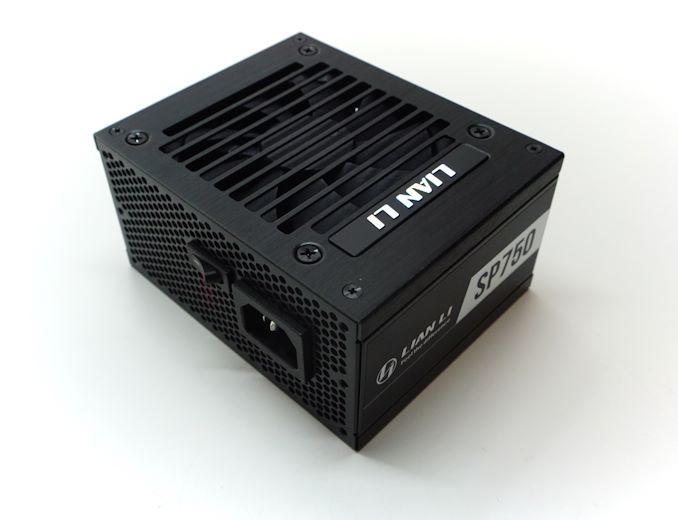
In the world of PC enthusiasts, Lian Li is a name synonymous with top-quality aluminum cases. The company introduced their first PC cases back in the 90’s, when PCs still were a rare find in living rooms. Their minimalistic designs and all-aluminum constructs were a jewel at the time of crude steel cases with beige plastic faceplates. Lian Li today is one of the most reputable case designers and manufacturers on the planet.
Introduction
For decades, Lian Li stood almost completely focuses on the design and manufacturing of top-tier PC cases. A few years ago, it entered the market with SFX-L power supplies, but the demand wasn't quite there. It was not until last year that the company took a significant step towards diversification with the introduction of all-in-one liquid cooling solutions. Apparently, the company found that diversification attempt successful and they are taking yet another step this year, with the introduction of a new SFX power supply this time around.
In today’s review, we are having a look at the SP750, Lian Li’s first-ever SFX PSU that rated at 750 W with an 80 Plus Gold certification. Lian Li certainly takes a peculiar diversification approach here, as their new PSU is not a regular-sized power supply, but an SFX unit, and one with a very high-power output to boot. This is a PSU for compact high-power gaming systems, quite possibly designed to match Lian Li’s own small case designs.
| Lian Li SP750 SFX Gold, Fully Modular Power specifications ( Rated @ 40 °C ) |
|||||
| AC INPUT | 100 - 240 VAC, 50 - 60 Hz | ||||
| RAIL | +3.3V | +5V | +12V | +5Vsb | -12V |
| MAX OUTPUT | 20A | 20A | 62A | 2.5A | 0.3A |
| 100W | 750W | 12.5W | 3.6W | ||
| TOTAL | 750W | ||||
Packaging and Bundle
We received the Lian Li SP750 in a cardboard box that is typical for consumer power supplies. There is nothing special about the box but it does provide enough protection to the unit for shipping. The aesthetic design also is relatively simple, with colored edges and based on a picture of the unit itself. It is apparent that Lian Li placed just as much effort as it was needed to create a proper modern packaging and no more than that.
Inside the box, we found a minimalistic bundle, even as far as a PSU is concerned. Aside from a gratitude card, and a very simple user’s manual, Lian Li only included the four black mounting screws. There are no cable ties or any other accessories accompanying this unit.
The Lian Li SP750 is a fully modular PSU and every cable can be detached, including the 24-pin ATX cable. All of the connectors and wires are black. The 24-pin ATX, the EPS, and the PCI Express cables are all individually sleeved as well, but the SATA and Molex connector cables are not. It is obvious that the cables are quite a bit shorter than regular ATX PSU cables, which is reasonable for an SFX power supply. This is a realistic choice considering that the PSU may be installed in very confined spaces where every millimeter counts but could become an issue for users wanting to use the PSU with a regular ATX case. What is strange here is the presence of three PCI Express connectors, because the SP750 clearly has the power output for two middle-range graphics cards but the lack of a fourth connector deprives users from that choice. The cables are supplied in a simple but effective storage pouch.
| Lian Li SP750 | ||
| Connector type | Hardwired | Modular |
| ATX 24 Pin | - | 1 |
| EPS 4+4 Pin | - | 1 |
| EPS 8 Pin | - | 1 |
| PCI-E 6+2 Pin | - | 3 |
| PCI-E 8 Pin | - | - |
| SATA | - | 8 |
| Molex | - | 4 |
| Floppy | - | - |
The Lian Li SP750 750W SFX PSU
External Appearance
Perhaps the greatest feature of the Lian Li SP750 is its size – the company managed to get that high a power output out of a standard 125 × 63.5 × 100 mm / 4.92 × 2.5 × 3.94 in (W×H×D) SFX form factor design, making the PSU compatible with virtually every SFX case in the market. SFX cases designed to fit top-tier graphics cards usually can accommodate an SFX-L PSU as well, yet ensuring compatibility with any SFX-compliant case regardless of its target market definitely is a good thing.
Lian Li spent plenty of time worrying about the aesthetics of their new PSU. Parts of the chassis are brushed aluminum, with stickers covering most of the unit’s sides. A beautifully made label with the company logo can be seen right next to the cooling fan. The designer went as far as choosing screws with polished heads.
Despite the compact dimensions of the unit, the designer managed to place a small on/off switch next to the AC cable on the rear side of the PSU. The front side is densely populated with the connectors for the modular cables. The connectors are not color-coded but there is a basic legend printed on the chassis indicating what each connector is for. Besides, it is practically impossible for a user to insert a cable into the wrong connector, as each cable type has a different connector and the connectors are keyed.
Internal Design
The fan responsible for the cooling needs of the SP750 is a low-profile 92 mm product made by Yate Loon, a company whose products we frequently see in PC power supplies. There is nothing too special about this fan, as it has a simple double-bearing engine and a very high theoretical maximum speed of 3000 RPM. Double bearing fans are rare in high-quality PSUs because of their high noise output but they are extremely reliable.
The OEM behind the creation of the Lian Li SP750 is Helly Technology, a company we rarely encounter. The interior of the SP750 is densely packed, which was to be expected for an SFX design with that much power output. The filtering stage starts on the back of the AC receptacle, consisting of two Y capacitors, two X capacitors, and two filtering inductors in total. It is a simple filtering stage, which ought to be just as efficient as necessary.
There is only one bridge rectifier, on its own heatsink – if anyone can call that tiny piece of metal a heatsink. The heatsink is but a small flat piece of metal, smaller than the chip itself. Space is an issue in such a design and a larger heatsink would obstruct the installation of the switch but we have the feeling that the designer could do a little better here.
The APFC circuit is textbook, with the active components on the large heatsink across the edge of the PCB, one filtering coil, and a single capacitor. The large 400V/470μF capacitor is made by Nippon Chemi-Con, as all electrolytics in the unit are. There are two primary side inversion MOSFETs that form the heart of an LLC resonant half-bridge design.
On the secondary side, we can see the unit’s relatively huge main transformer surrounded by a thin metallic plate that acts as a heatsink for the 12V generating MOSFETs. As with all modern PSU designs, the 3.3V and 5V lines are derived via DC-to-DC conversion circuits. Most of the capacitors are polymer and are made by Beryl or, for those interested in the full name of the company, Zhao Qing Beryl Electronic Technology Ltd. Although this is the first time we have seen their products in a commercial PSU, Beryl is a reputable manufacturer, with a significant R&D division and global research collaborations on the advancement of, mainly polymer, capacitors.
Read on for our testing of this power supply.


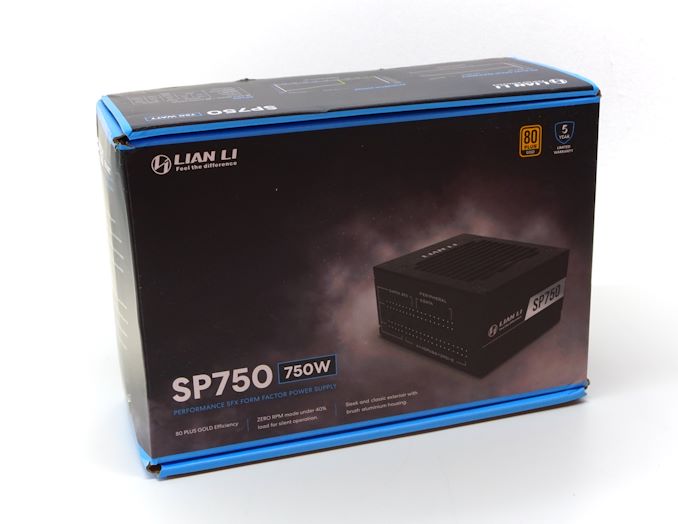


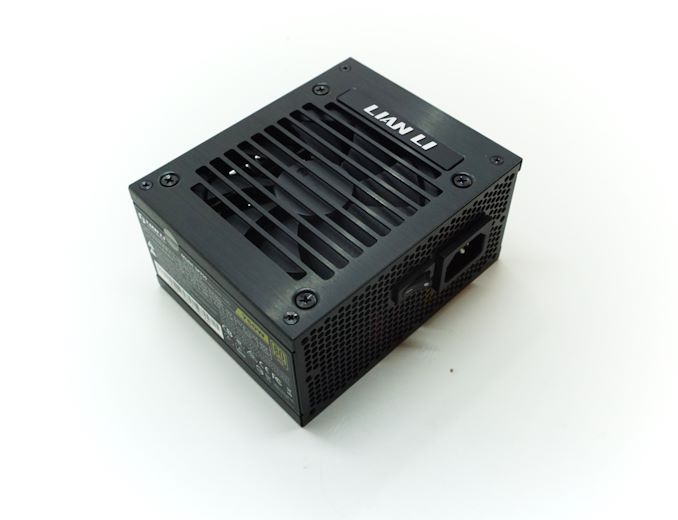
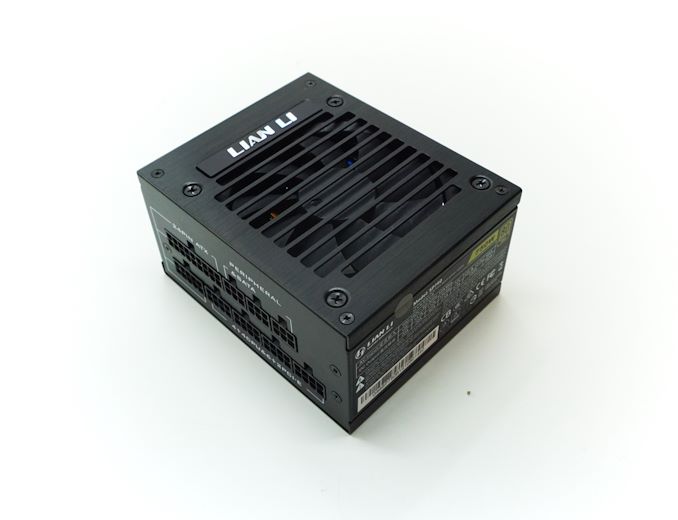
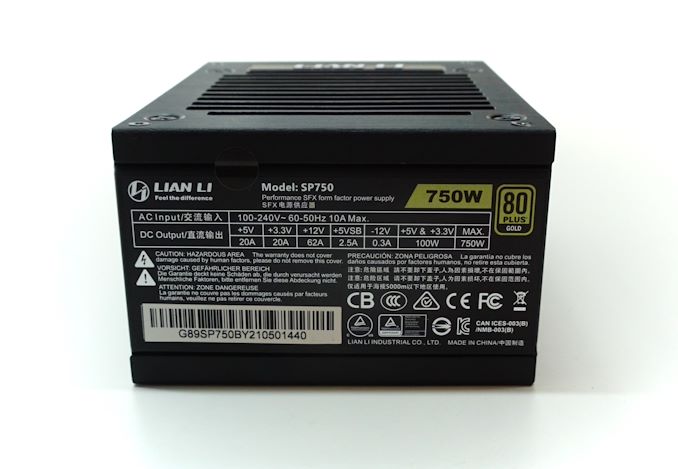
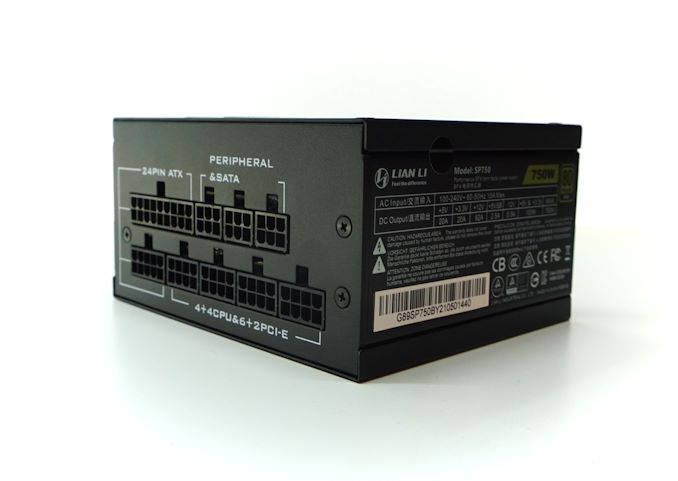
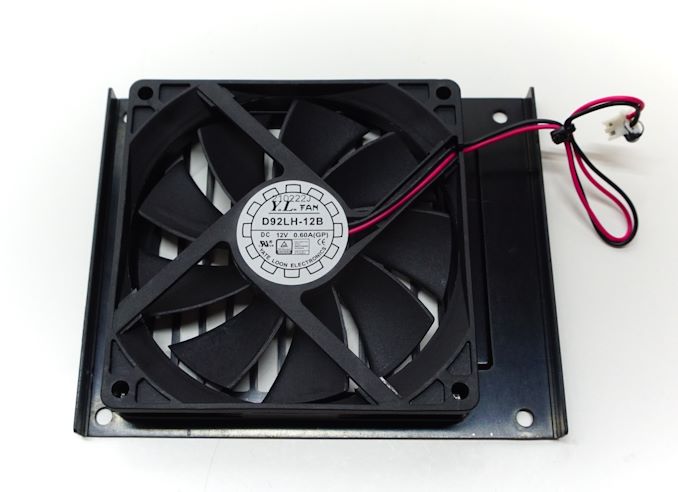
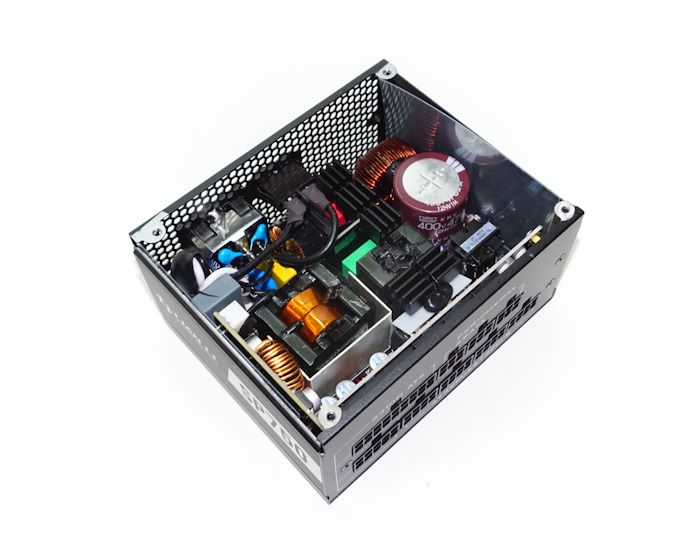
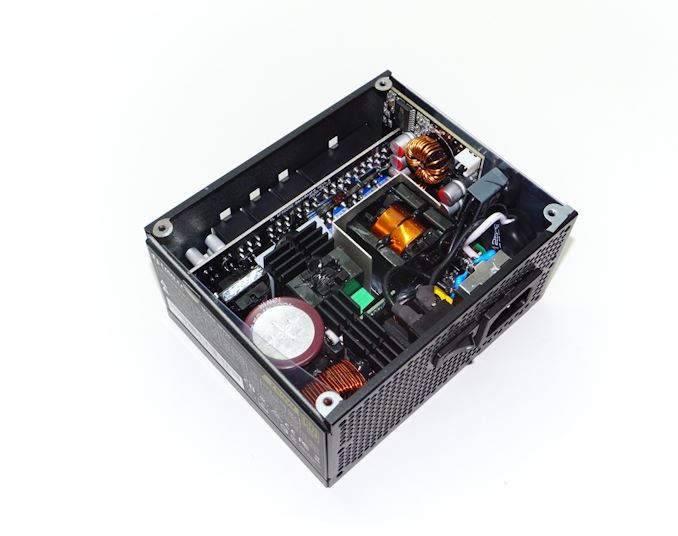
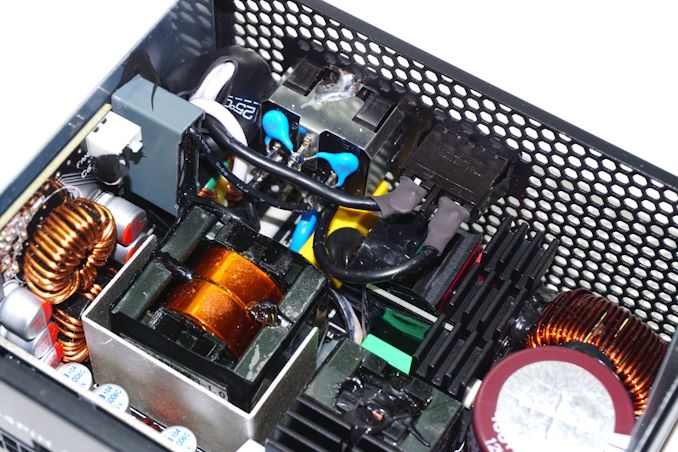
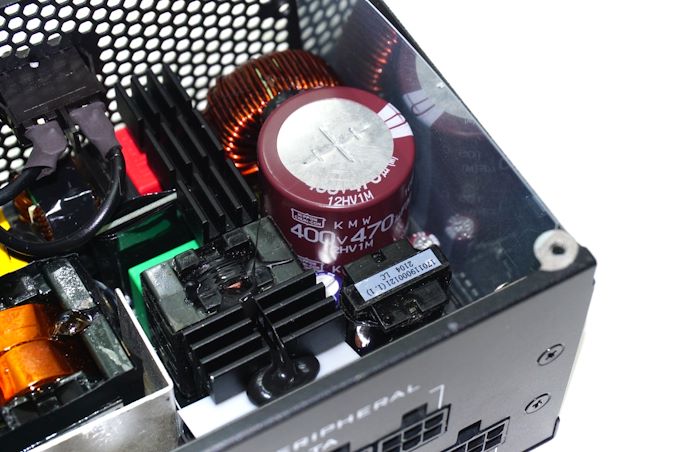
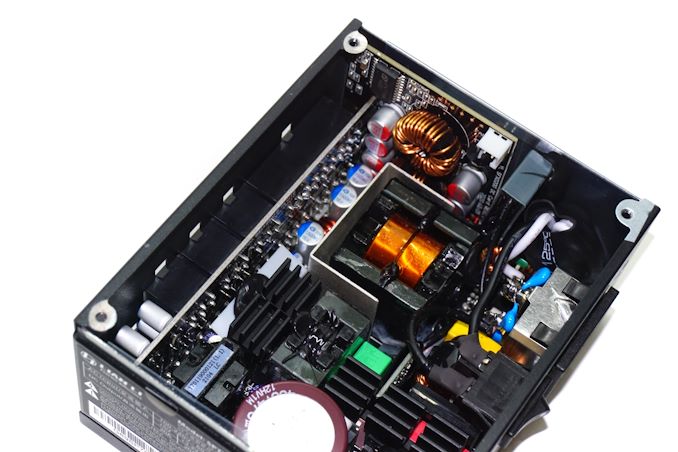








29 Comments
View All Comments
meacupla - Tuesday, July 13, 2021 - link
okay, in that case, I want to see someone's matx, sfx, dgpu compute pc then.Spunjji - Tuesday, July 13, 2021 - link
It does sound like a niche within a niche (within a niche)Questor - Tuesday, July 13, 2021 - link
I don't have a picture of one. I can tell you they exist. Go to Small Form Factor dot net and there you will find SFF cases designed for bifurcation of the single PCIexpress slot. There are riser cables designed for it as well. It certainly has nothing to do with playing games. It is a real thing though I agree a special situation scenario.thestryker - Monday, July 12, 2021 - link
While I'm fairly confident that the PSU would last a long time the warranty period is disconcerting. Now this might just be due to the contract Lian Li signed with the ODM, but even the midrange PSU I got 5 years ago for my system came with a 10 year warranty. If this foray is successful for Lian Li it will be interesting to see if they go back and lengthen the warranty.As always I really appreciate the quality of the PSU reviews done here, and the high ambient testing brings in a unique dynamic.
jonnyGURU - Monday, July 12, 2021 - link
Lian Li's first PSU? Lian Li has had PSUs since 2008!!! They literally have two SFX-L PSUs on the market that were launched just five years ago! LOL!kaidenshi - Tuesday, July 13, 2021 - link
You may wish to re-read the article instead of skimming. This is their first non-L SFX PSU. Their SFX-L models were addressed in the article:"A few years ago, it entered the market with SFX-L power supplies, but the demand wasn't quite there."
Oxford Guy - Tuesday, July 13, 2021 - link
The fan is a mistake.Ball bearing fans have no place outside of radiators in consumer systems and even then it's questionable.
I have also read the claims that they are more prone to damage if they are knocked hard or dropped — and that they become noisier over time (unlike FDB and other high-quality alternatives). I am not sure if either are true but the noise performance of this unit, fresh and undamaged, is enough to show that the fan is a mistake.
Spunjji - Tuesday, July 13, 2021 - link
I believe they've gone for the least expensive option that would still survive the high temperature environment inside a small PSU. Sleeve bearing fans die too quickly in such circumstances, and anything resembling FDB probably involves the sort of cost increase they'd want to avoid.Personally I'd be happy enough replacing the fan myself if the noise became an issue, but it's a shame for the sort of end users who rely on warranties.
Oxford Guy - Tuesday, July 13, 2021 - link
‘anything resembling FDB probably involves the sort of cost increase they'd want to avoid.’The company clearly did want to avoid it. The consumer can avoid the product in return.
Samus - Tuesday, July 13, 2021 - link
As an EE, this thing is practically pornography for me. Beautiful unit.